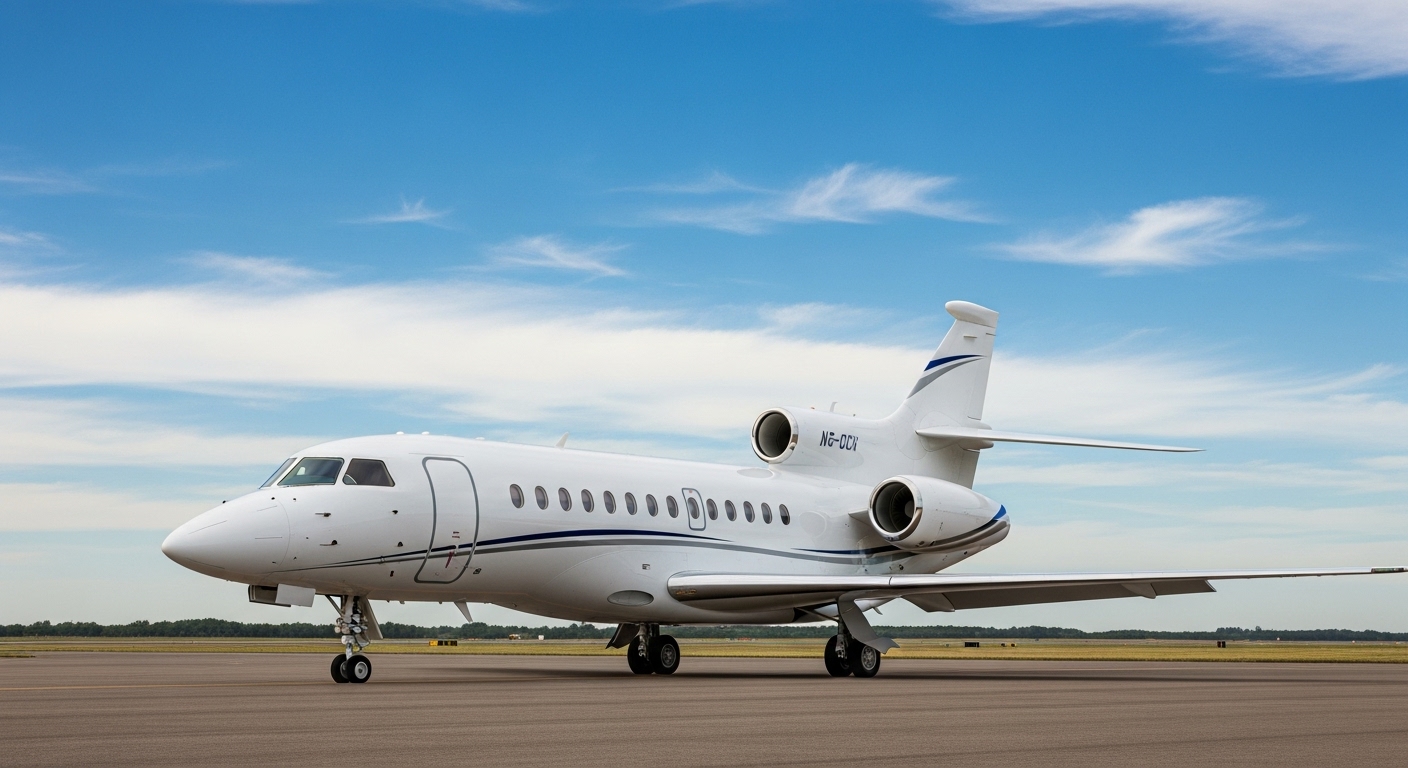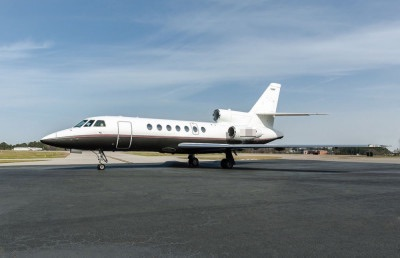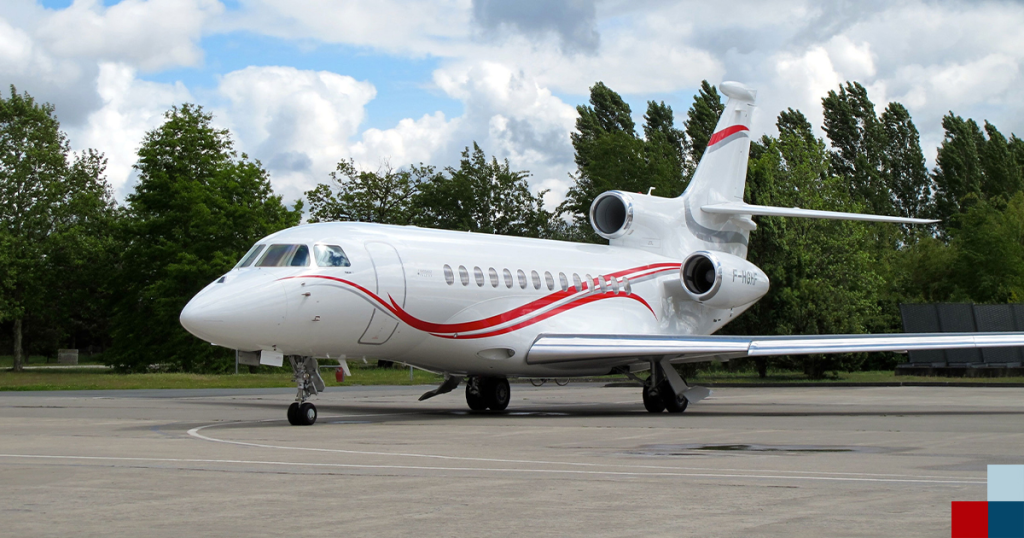
Several private jets have three engines, including the Dassault Falcon 50, 900 series, 7X, and 8X. These trijets offer enhanced safety, long-range capabilities, and operational flexibility. They remain popular in private aviation but are rare in commercial and military sectors.
Private jets with three engines represent a unique and specialized category in modern aviation. While the vast majority of private jets use two engines for reasons of efficiency and maintenance simplicity, three-engine configurations, or trijets, stand out for their combination of enhanced performance, increased safety, and operational versatility.
Though rarer today, they hold a distinct place in aviation history and continue to serve specific roles in private aviation.
Among these, the Dassault Falcon series is the most prominent and enduring example. From the pioneering Falcon 50 to the ultra-long-range Falcon 8X, Dassault has championed trijet designs to offer unmatched range, flexibility, and safety features that many competitors cannot replicate.
Why Do Some Private Jets Have Three Engines?
- Enhanced Safety: One of the key reasons some private jets feature three engines is the enhanced redundancy they offer. In the event of an engine failure, a trijet can continue flying safely with the remaining two engines, providing an extra layer of security for both passengers and crew.
- Improved Performance: Private jets with three engines can climb faster and cruise more efficiently at higher altitudes than their twin-engine counterparts. This is particularly advantageous for long-range, transcontinental flights where fuel efficiency and speed are paramount.
- Operational Flexibility: Trijets also excel in operational flexibility. Their superior thrust-to-weight ratio allows them to operate from shorter runways and access remote airports that may be inaccessible to larger or less powerful jets.
However, this design is less practical for commercial airlines, where efficiency and operating costs typically outweigh these advantages.
Top Private Jets with Three Engines
Dassault Falcon 50

The Dassault Falcon 50 is a super midsize trijet that first demonstrated the viability of this configuration for private aviation. Known for its reliability, it offers impressive transatlantic capability, routes such as London to New York can be completed non-stop, making it a favored option for business travelers requiring efficient long-distance travel.
Dassault Falcon 900 Series (EX, LX)
The Falcon 900 series elevated the trijet design to the heavy jet category. With a range of up to 4,750 nautical miles, it combines long-range performance with luxury. The Falcon 900LX, in particular, features advanced avionics like the FalconEye vision system, providing enhanced situational awareness in low-visibility conditions.
Additionally, its luxurious cabin and superior climb rates make it a standout for both corporate and leisure travel.
Dassault Falcon 7X
The Dassault Falcon 7X represents a major technological leap as the first business jet to incorporate fully digital flight controls. Its range of nearly 6,000 nautical miles allows for seamless non-stop intercontinental travel.
This jet is particularly popular with global corporate clients who value both its technological sophistication and its ability to connect distant cities without refueling.
Dassault Falcon 8X

At the pinnacle of Dassault’s trijet offerings is the Falcon 8X. With an extraordinary range of 6,450 nautical miles, it is powered by three Pratt & Whitney engines and offers maximum cabin customization.
Advanced avionics and enhanced efficiency make it the flagship of the Falcon line, embodying the evolution and ongoing relevance of trijet business aviation.
Are There Any Jetliners or Fighter Jets with Three Engines?
Commercial Jetliners
Historically, several iconic commercial aircraft utilized three engines, most notably the McDonnell Douglas DC-10 and the Lockheed L-1011 TriStar.
These trijets were once the backbone of long-haul commercial aviation, providing redundancy and range before technological advancements made two-engine designs more viable.
Today, modern commercial jets predominantly use two engines. Advances in engine reliability, coupled with regulatory changes such as Extended-range Twin-engine Operational Performance Standards (ETOPS), have rendered trijets largely obsolete in passenger service.
Their higher operational costs and increased maintenance complexity have further accelerated this transition.
Military Fighter Jets
No modern fighter jets are designed with three engines. The additional complexity, weight, and aerodynamic challenges of a third engine offer no tactical advantage in combat aviation.
Fighter jets prioritize speed, agility, and fuel efficiency, criteria best met with single or twin-engine configurations.
While some military transport or reconnaissance aircraft have historically used three or more engines, the concept has never been applied to frontline fighter jet design.
Unique Benefits of Private Trijets
- Bypass of ETOPS Restrictions: One of the strategic advantages of a private jet with three engines is the ability to bypass ETOPS limitations. Trijets are not subject to the same restrictive routing as twin-engine aircraft, allowing for more direct intercontinental flights.
- Cabin Comfort and Customization: Dassault Falcon trijets are renowned for their spacious and luxurious interiors. Passengers benefit from high-grade materials, customizable layouts, advanced air filtration systems, and state-of-the-art entertainment options.
- Digital Avionics & FalconEye: Dassault has pioneered advanced avionics in its trijet fleet. The FalconEye Combined Vision System, for example, merges synthetic and infrared imagery to provide pilots with exceptional situational awareness, especially in low-visibility environments.
Why Did Trijets Fall Out of Favor?
- Fuel Inefficiency: Trijets inherently consume more fuel than their twin-engine counterparts due to the added weight and complexity of a third engine. This increased fuel burn translates to higher operational costs, which has been a significant factor in the aviation industry’s gradual shift towards more efficient twin-engine designs.
- Maintenance Complexity: Adding a third engine not only increases initial acquisition costs but also elevates ongoing maintenance demands. More frequent inspections, additional parts, and the need for specialized maintenance expertise make trijets less appealing for operators seeking cost-efficiency and streamlined upkeep.
- Advancements in Twinjets: Technological advancements in twin-engine aircraft have closed the performance and reliability gap that once justified trijet configurations. Consequently, the market for new trijets has narrowed to specific niches where their unique benefits still outweigh the costs.
Where Are Trijets Still Used?
Private Aviation
Trijets have found enduring relevance in private aviation, particularly within Dassault’s Falcon lineup. These aircraft offer a blend of range, performance, and cabin luxury that continues to attract business executives, heads of state, and ultra-high-net-worth individuals. The flexibility to access shorter runways and remote destinations further solidifies their position in this niche.
Cargo Operations
While passenger trijets have largely been retired from commercial fleets, many older models have been repurposed for cargo operations. Their robust airframes and ample payload capacities make them valuable assets for freight carriers, especially on routes where fuel costs can be offset by operational efficiency and cargo volume. Despite their higher fuel consumption, these trijets remain practical for specific logistics scenarios where their performance characteristics are advantageous.
What to Consider Before Choosing a Trijet
- Mission Profile Alignment
- Assess your range requirements—trijets often excel at long-range missions.
- Consider access to smaller or remote airports; trijets like Dassault Falcons offer superior short-field performance.
- Ensure passenger capacity matches your typical travel needs.
- Performance vs. Cost Balance
- Trijets offer increased safety through engine redundancy and better high-altitude performance.
- However, they come with higher operational and maintenance costs compared to twin-engine jets.
- Evaluate whether the performance benefits justify the additional expenses.
- Premium Features
- Dassault Falcons are renowned for combining extended range with advanced avionics systems.
- These aircraft offer luxurious cabins, providing a premium travel experience.
- Ideal for owners who prioritize both operational versatility and passenger comfort.
Are Trijets the Right Choice?
For private owners who prioritize long-range capability, operational flexibility, and an elevated in-flight experience, trijets remain a compelling option. Dassault’s commitment to refining its trijet fleet ensures these aircraft continue to meet the sophisticated needs of private aviation.
Conversely, for commercial airlines and military applications, the efficiency and reliability of modern twin-engine aircraft typically offer greater economic and operational benefits. Still, Dassault’s innovations keep trijets highly relevant for discerning travelers.
Ready to Experience the Power of a Trijet Business Jet?

Whether you’re considering the unmatched range of a Falcon 8X or need expert advice on private planes with 3 engines, FlyUSA is here to help. Our aviation professionals provide direct access to premium aircraft, personalized management, and seamless charter solutions.
Contact us today to speak with one of our private aviation advisors and explore how FlyUSA can elevate your flight experience.
About FlyUSA, Inc.:
FlyUSA, Inc. provides seamless, end-to-end private aviation solutions to clients across the United States. Founded by pilots and built on a commitment to safety, teamwork, growth, and doing the right thing, FlyUSA offers on-demand charter flights, the Ascend Club membership program, jet card options, and full-service aircraft acquisitions and management.
FlyUSA also offers a proprietary booking app that simplifies private aviation with real-time pricing, guaranteed rates, and full in-app trip management while delivering a faster, more transparent experience for modern travelers.
Known for being personalized, easy to do business with, and highly responsive, FlyUSA is redefining private aviation through solutions that deliver an elevated, effortless experience. With a growing fleet of managed aircraft and more than 2,000 clients and members nationwide, FlyUSA’s rapid growth earned a #45 ranking on the 2024 Inc. 5000 list of fastest-growing private companies.

